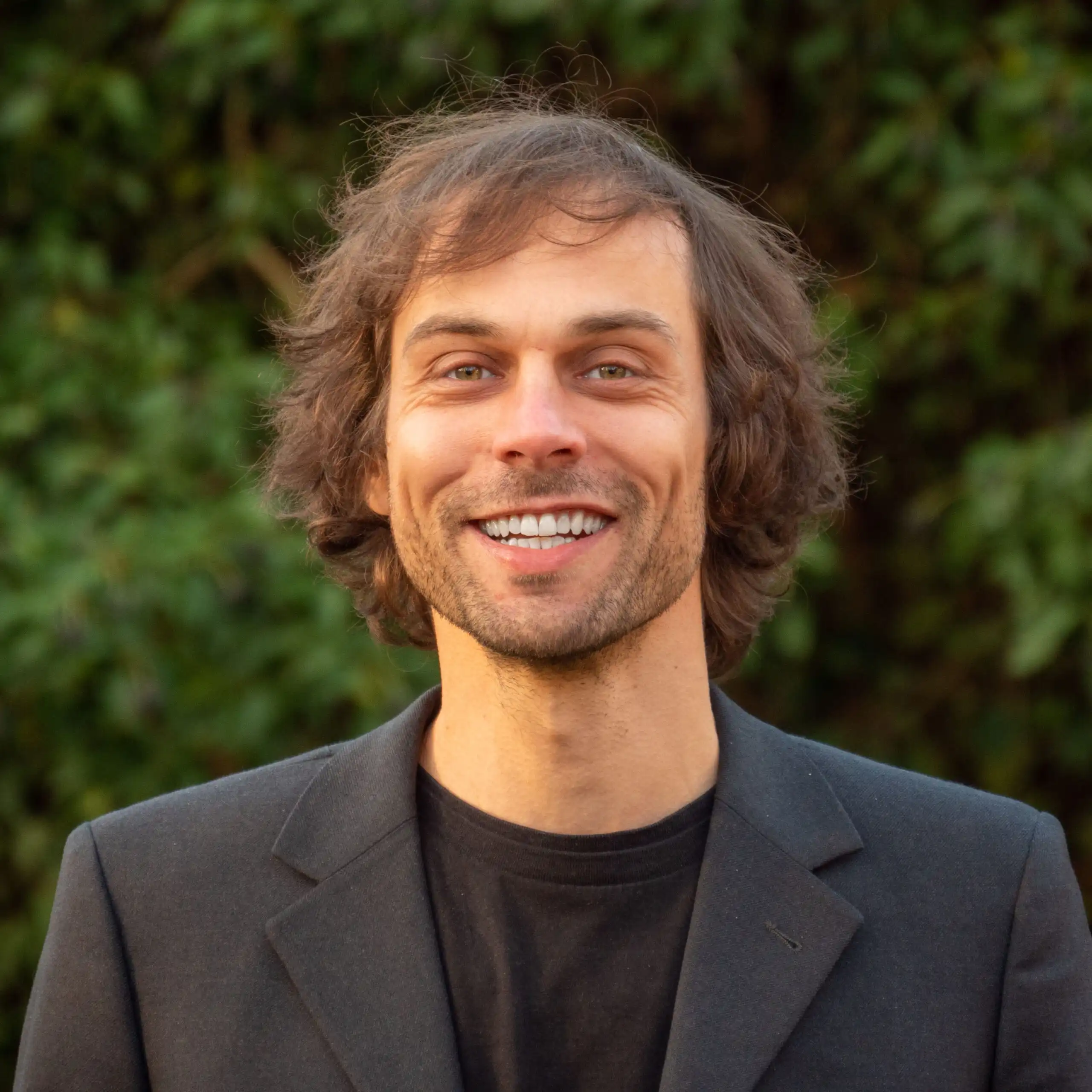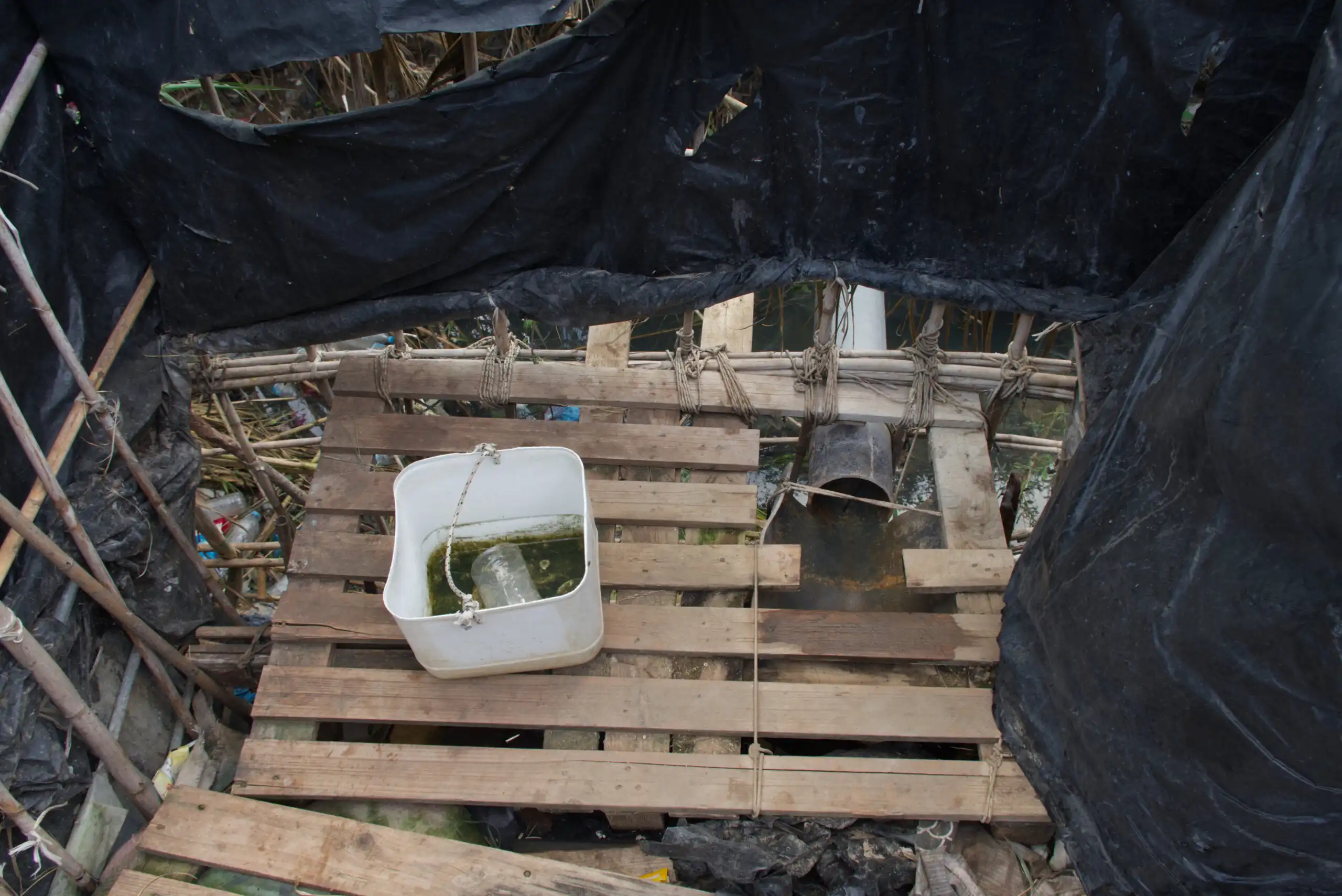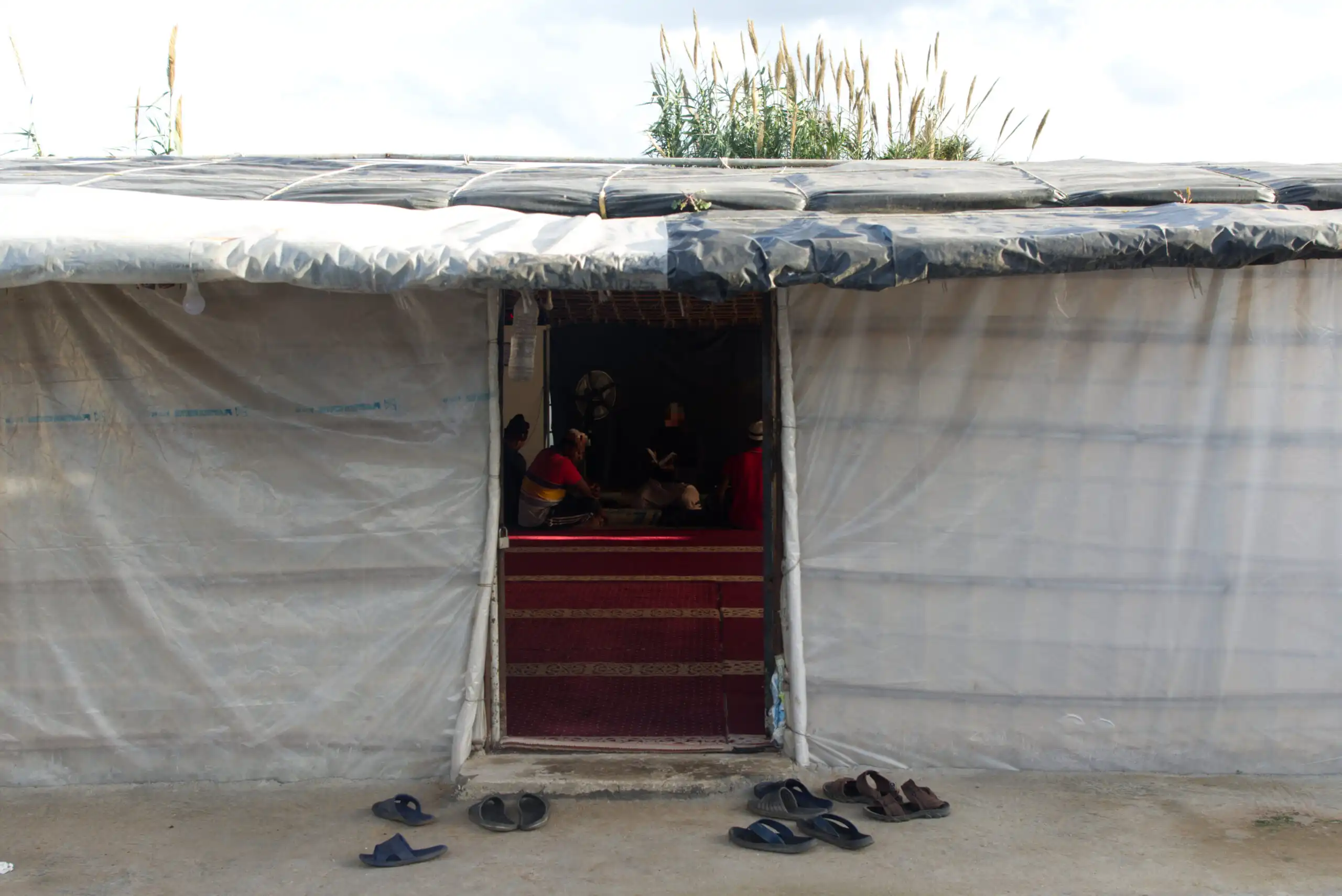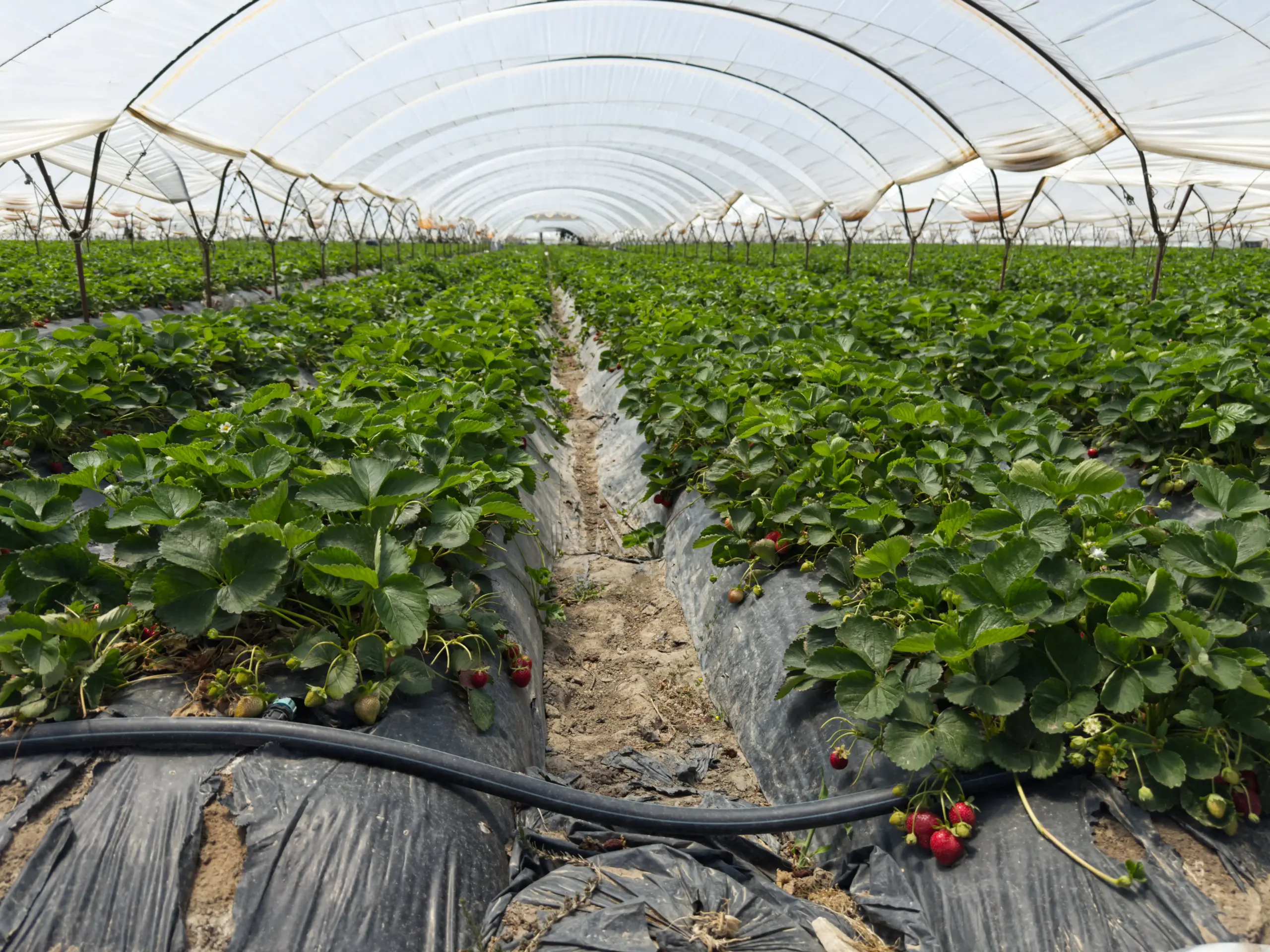Post
3 Min.
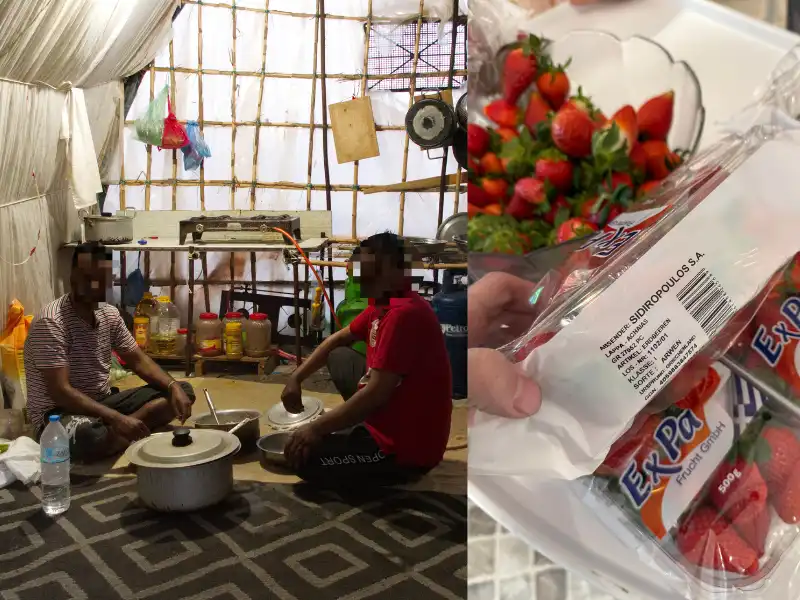
16. June 2025
Greek strawberries “made in Bangladesh”
Strawberries are now also available to buy in winter. They thrive in Nea Manolada, Greece, but there are downsides to growing them. Scientist Johannes Jungfleisch has investigated the conditions of South Asian workers.
On the back of some strawberry packs, which you can now even buy in the supermarket in winter, it often says in very small letters: “Country of origin Spain” or “Country of origin Greece”. In Greece, they usually come from the area around the village of Nea Manolada, which is located in the west of the Peloponnese peninsula. Farming has been very important there for over 2000 years, as the soil is fertile and it rains enough – a real rarity for Greece.
Until the beginning of the 20th century, farmers worked in mostly small family businesses. They cultivated various crops, such as cotton, grapes, melons, potatoes, cucumbers and tomatoes. On old satellite images from the 1960s, the fields look like a colorful patchwork quilt from above.
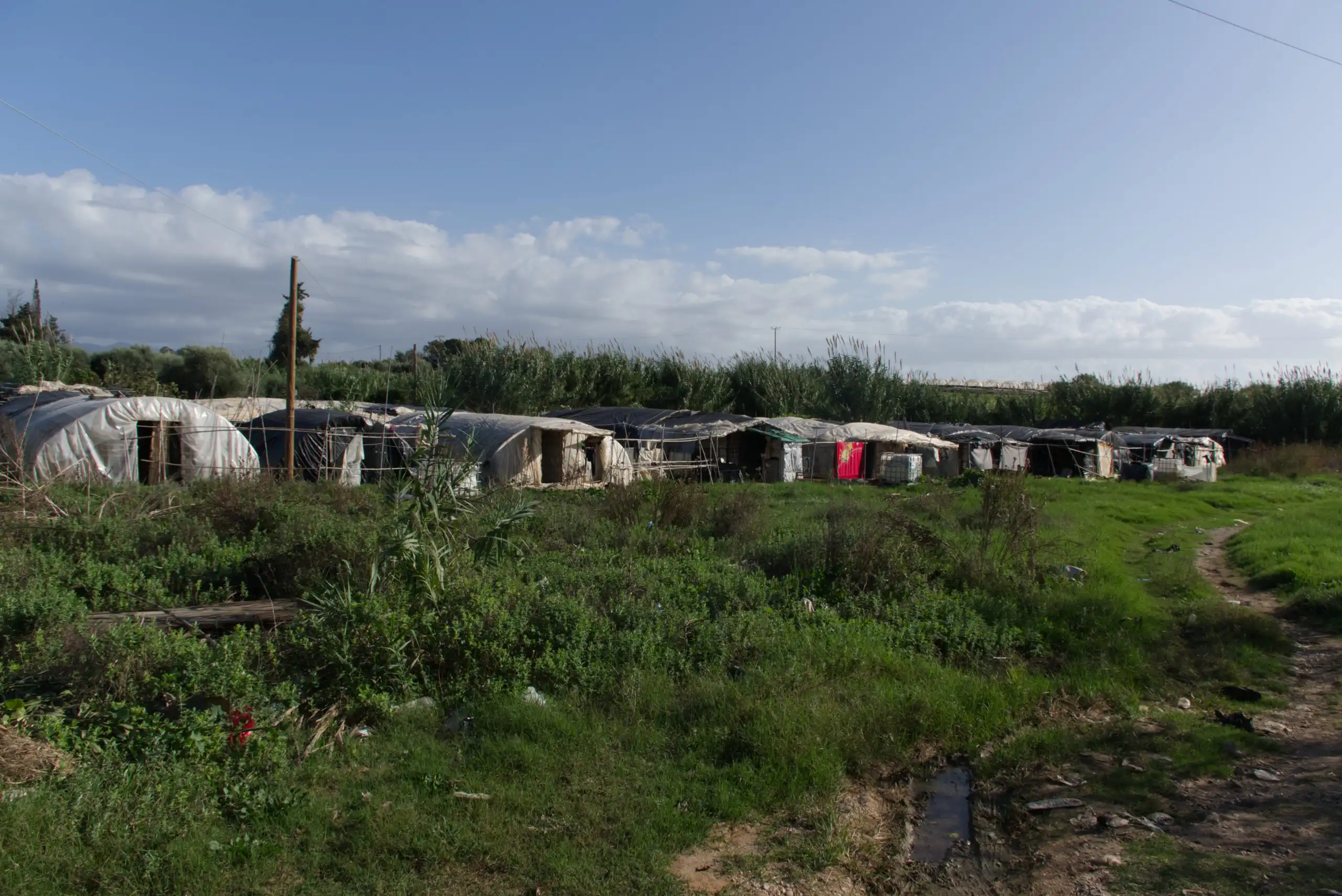
Today, the area looks completely different: Long rows of shiny silver greenhouses with plastic sheeting cover the plain – between the sea to the west and the mountains to the east. Under these greenhouses grow what former Greek Prime Minister Georgios Papandreou called the “red gold of Greece”: strawberries. These are very important for the economy of the region around Nea Mandela. Even during the debt crisis in Greece in the 2010s, farmers planted more and more strawberries because they were able to sell them to many other countries.
The price of sweet fruit
At first glance, it all sounds like a success story. But strawberry cultivation in the region has its downsides. It only works with modern methods. Many plastic films, chemicals and fertilizers are used, which can lead to soil and water pollution.
A large workforce is needed for the heavy work in the fields. At the same time, more and more young people in Greece are moving from the countryside to the cities. As a result, there are not enough people who want to work in agriculture. Farmers are therefore hiring workers from other countries – for example from Bangladesh, India, Nepal and Pakistan. They often come to Greece via the eastern Mediterranean route via Turkey.
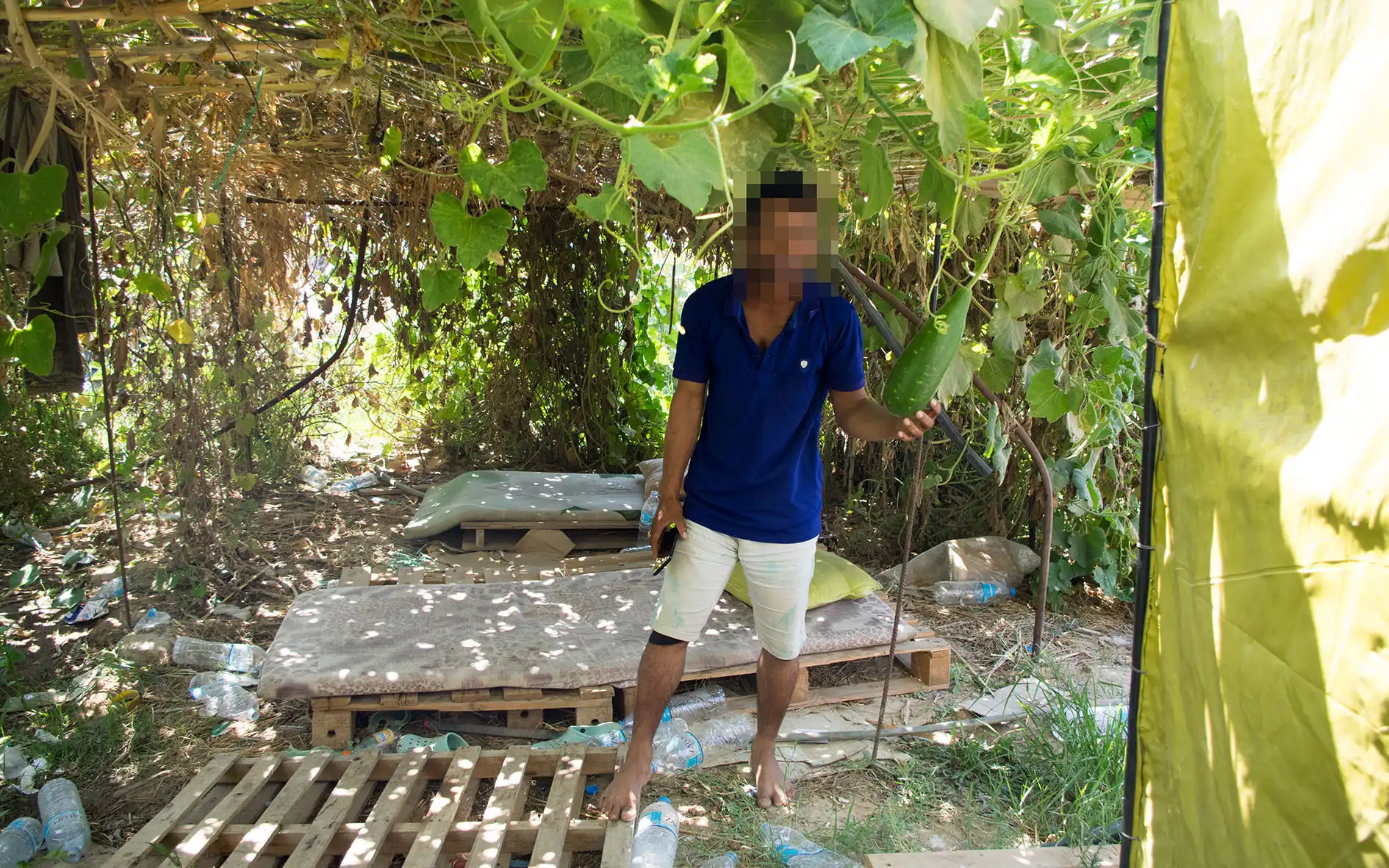
Some of them do not have valid papers because they are migrating illegally. According to the law, they are therefore not allowed to stay in the country. Officially, they are also not allowed to work. Nevertheless, they have to earn money to live. People therefore accept poor working conditions and very little pay. In 2022, the average hourly rate for a seven-hour working day was 3.50 euros. The Greek minimum wage that year was around 4.45 euros.
Johannes Jungfleisch from the Leibniz ScienceCampus “Resources in Transformation (ReForm)” in Bochum conducts research into the archaeology of modernity. He is investigating exactly what the working and living conditions of people from Bangladesh look like – in other words, their environment and the things they live and work with.
Living in the middle of strawberry fields
Thousands of men from Bangladesh come to Nea Manolada, especially at harvest time. However, the small villages in the area do not offer enough living space for so many workers. This is why many of them live several kilometers away – in temporary settlements directly on the fields.
For Johannes Jungfleisch, researching here means, above all, visiting the settlements, talking to the workers and carefully documenting what he sees and hears. To do this, he conducts interviews and takes photos – for example of the huts and the things that the men from Bangladesh use in their everyday lives. In this way, a comprehensive picture of life in these settlements gradually emerges.
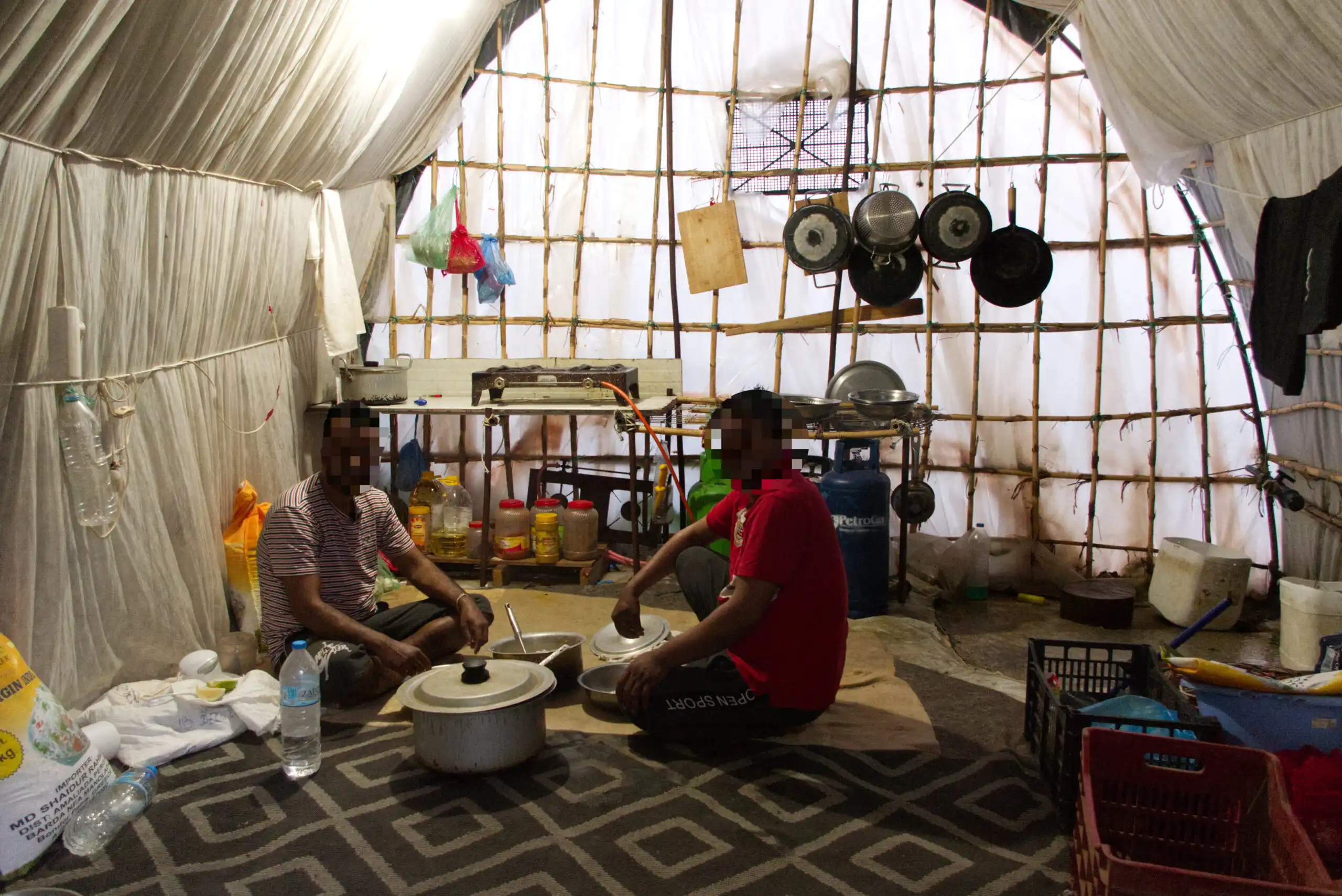
Many of the shelters look like greenhouses. At first glance, there is a practical reason for this: the workers use old and discarded agricultural materials to build their huts. But the shelters offer hardly any protection from the cold, heat or rain – and little privacy. There is no sewage system, running water or waste disposal.
Traces of Bangladesh in Greece
At the same time, the workers are trying to make their lives a little more pleasant. In the settlements, they create small gardens with arbor-like structures – similar to those in their home country of Bangladesh. These provide shade in the summer heat. They also grow vegetables that they have brought with them from their home country. There are also makeshift mosques between the huts and gardens, as Islam plays an important role in the lives of many workers.
Traces of Bangladeshi workers can also be found outside the fields.
There are small stores in the Greek villages that sell typical Bangladeshi food and everyday products. Some snack bars even serve food that you would expect to find in Bangladesh’s capital Dhaka – and not in small villages in the Greek countryside.
In 2023, Greece and Bangladesh created a programme to legalize South Asian workers. Although those affected are now allowed to come to Greece legally during the season, there are still no rules for accommodation. As a result, the working and living conditions for migrants remain precarious:
Behind the Greek winter strawberry in the German supermarket lies a world that is as surprising as it is complex. The case of Nea Manolada clearly shows how closely migration is linked to our food production. And it reminds us that food is never cheap for no reason. Someone always pays the price – in this case the workers from Bangladesh and the environment.
Über diesen Artikel
Lesen Sie auch
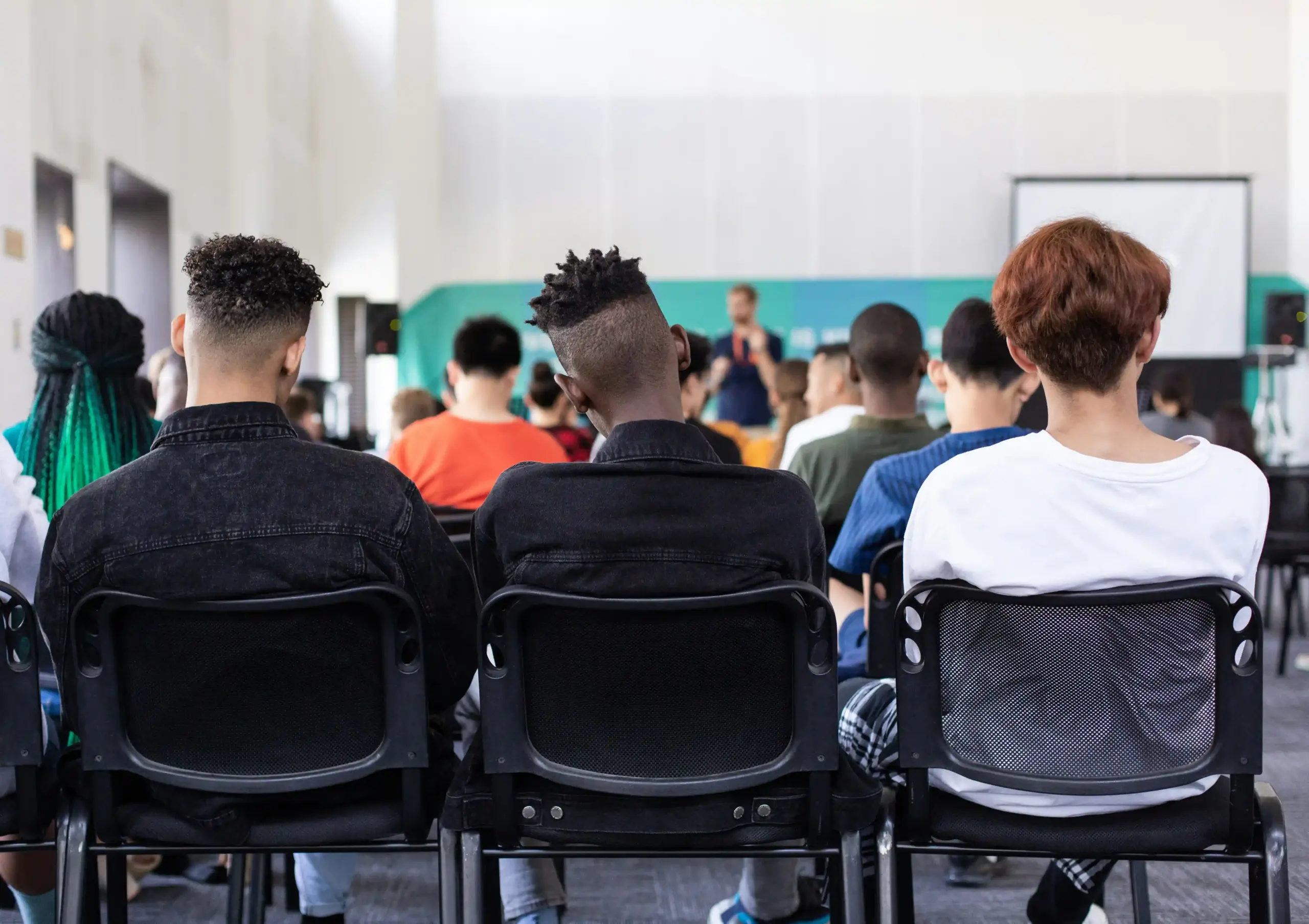
How communities can improve the integration of migrants
Millions of people seek asylum in Europe every year. However, complex rules make it difficult for migrants to arrive and integrate successfully. Local authorities have opportunities to facilitate the integration process. We present a few examples.
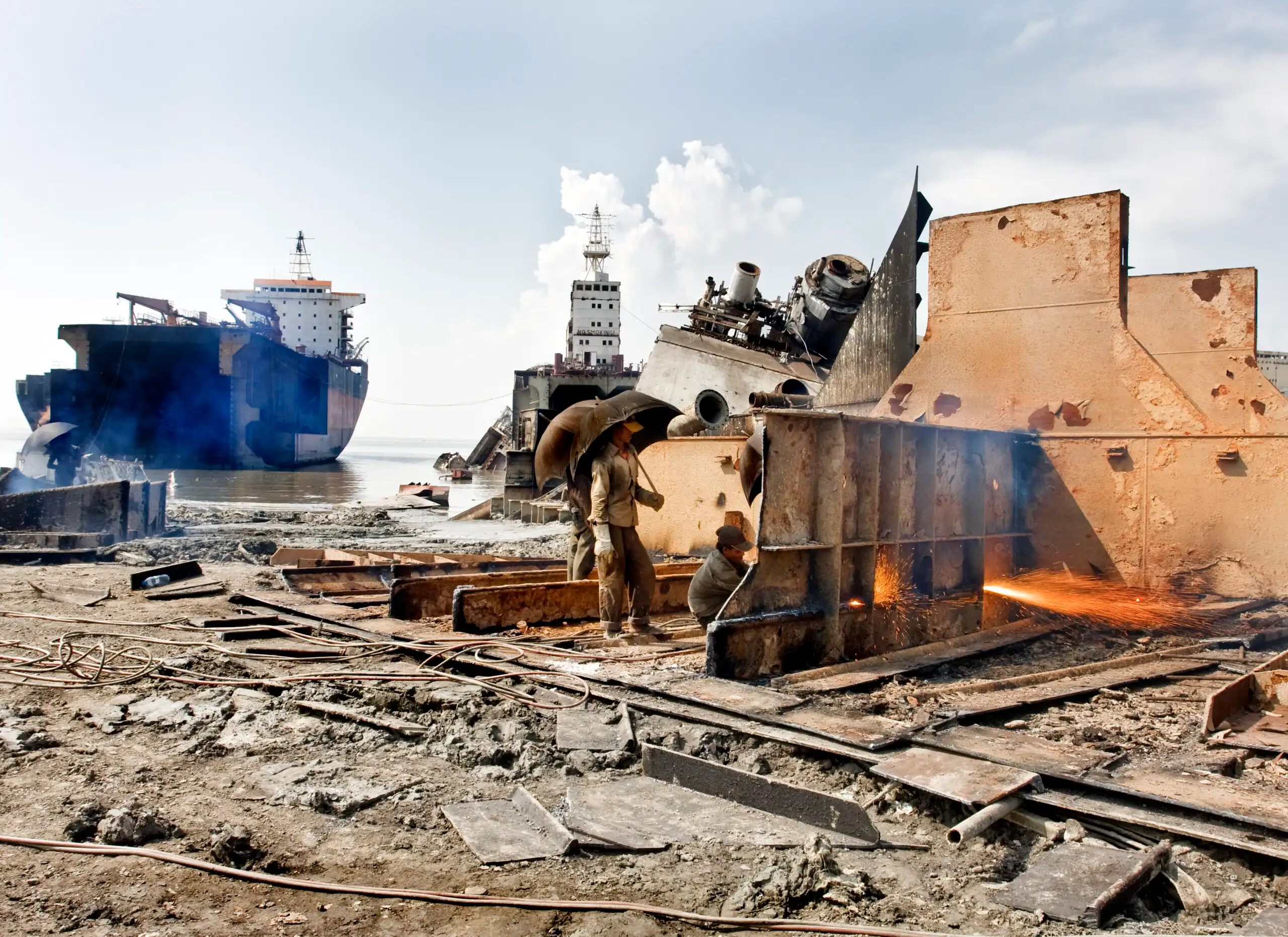
Silent giants on their last journey
A half-disused ship’s hull rusts in the shallow water, where puddles of oil shimmer in every color of the rainbow. Furnishings, electronics and useful goods have already been sold – a huge sales market ensures that the livelihoods of many families depend on it. In front of the dead colossus, workers hammer away at the […]
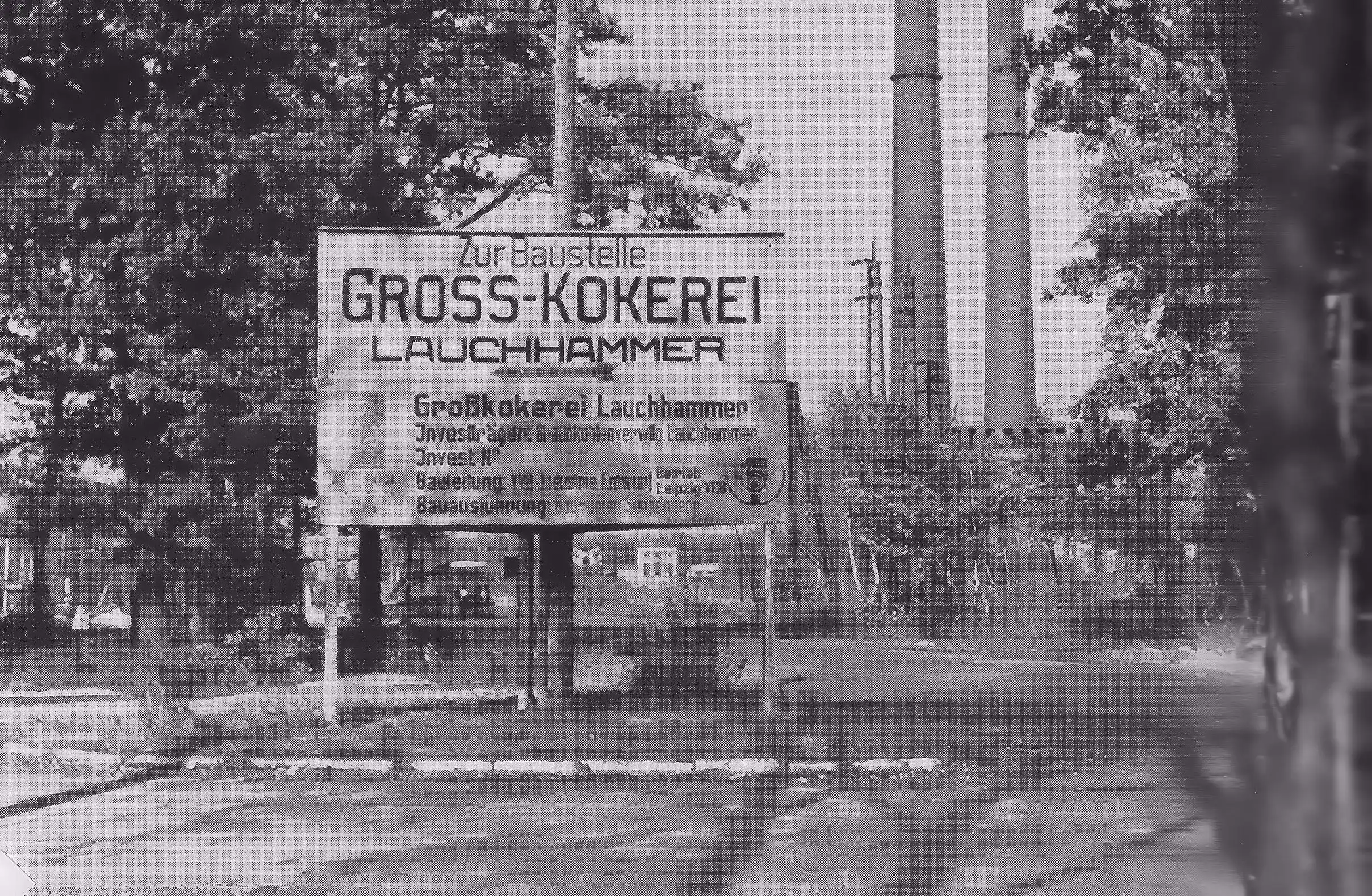
Seeking a new narrative – How a small town is reinventing itself
The name Lauchhammer has little to do with the vegetable that adds flavour to stews and soups. Lauch means ‘moor’ in Lower Sorbian and refers to the landscape in southern Brandenburg where the small town is located. The word “hammer” in the town’s name alludes to its industrial tradition. Iron ore has been mined and […]

